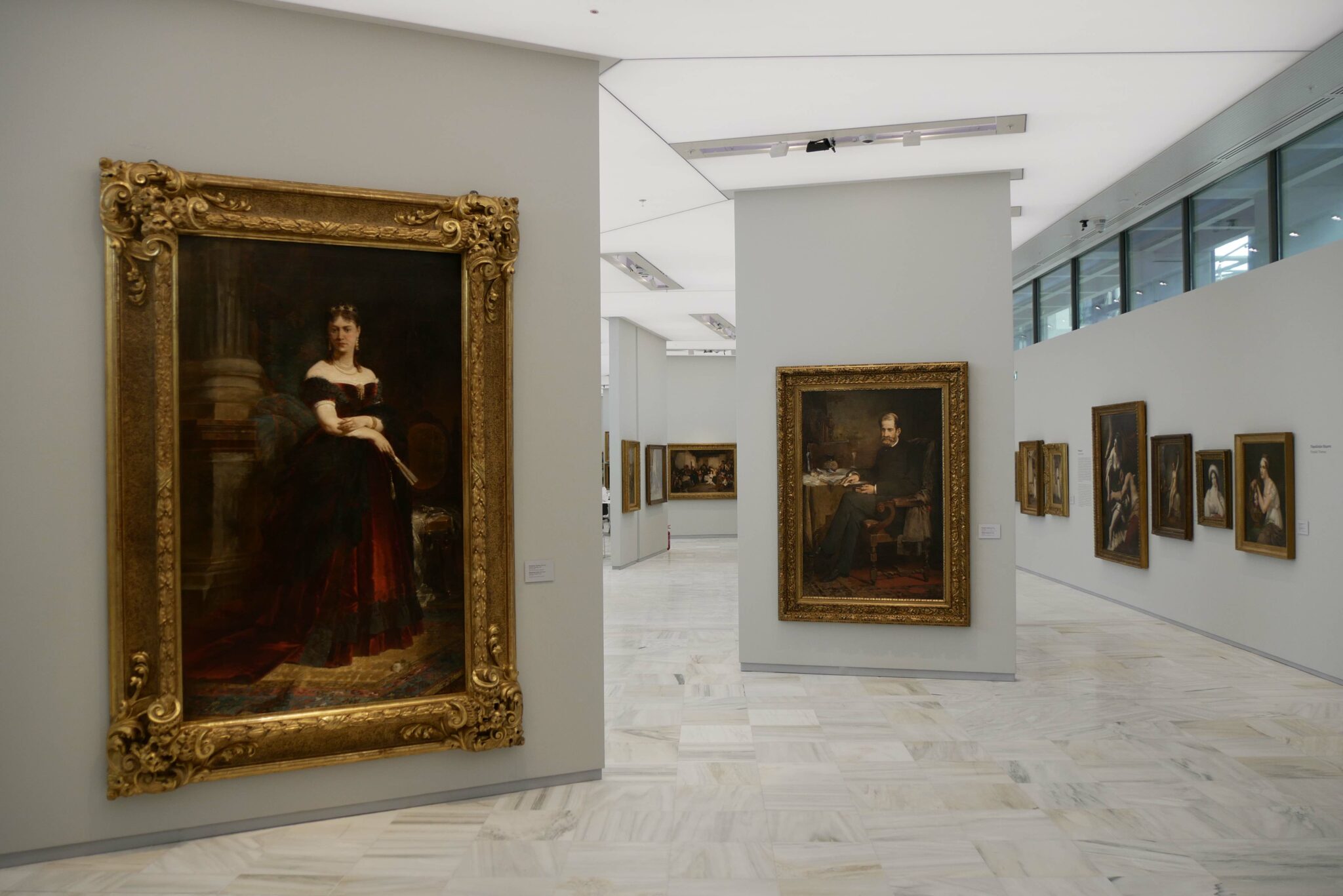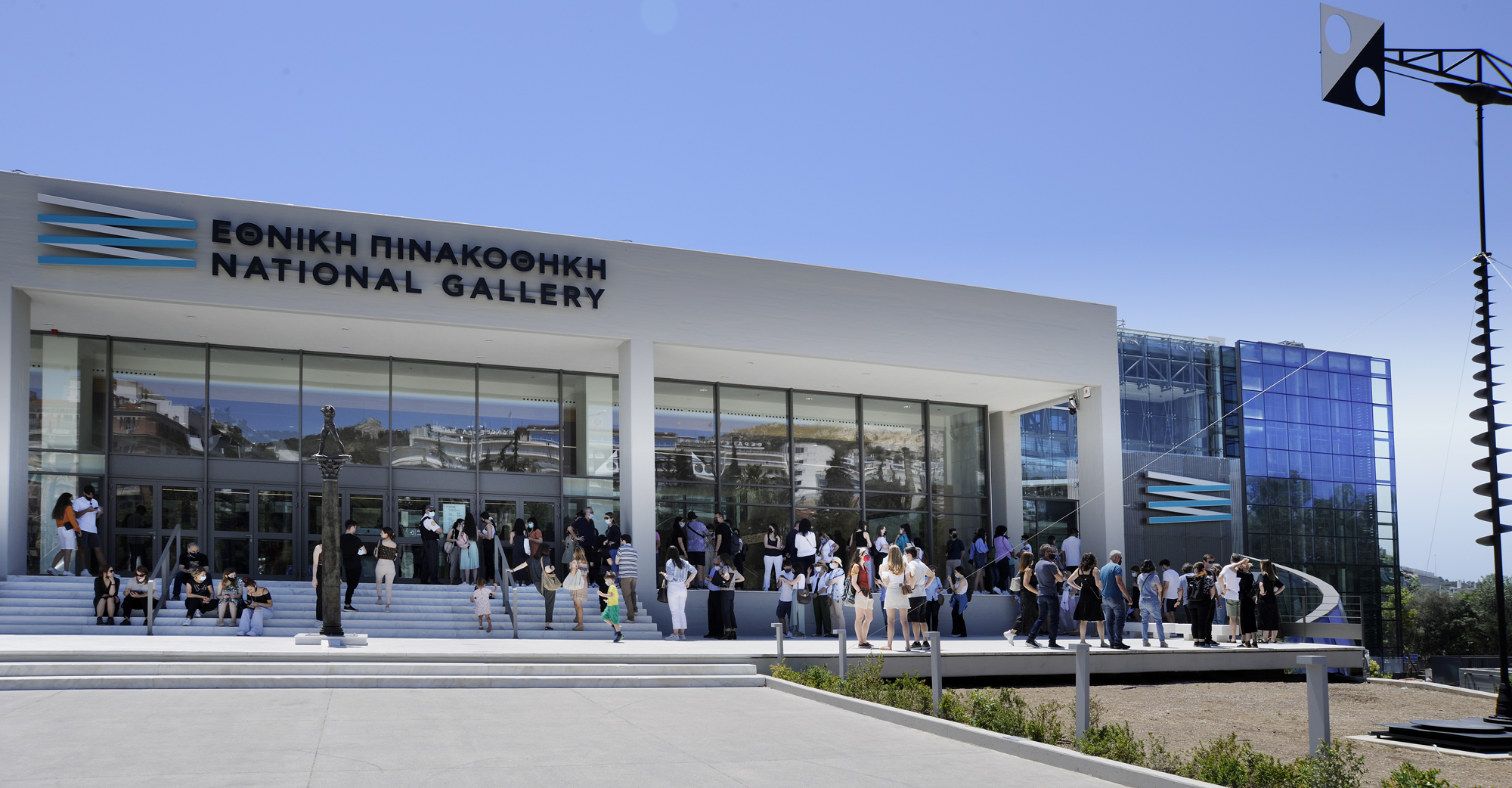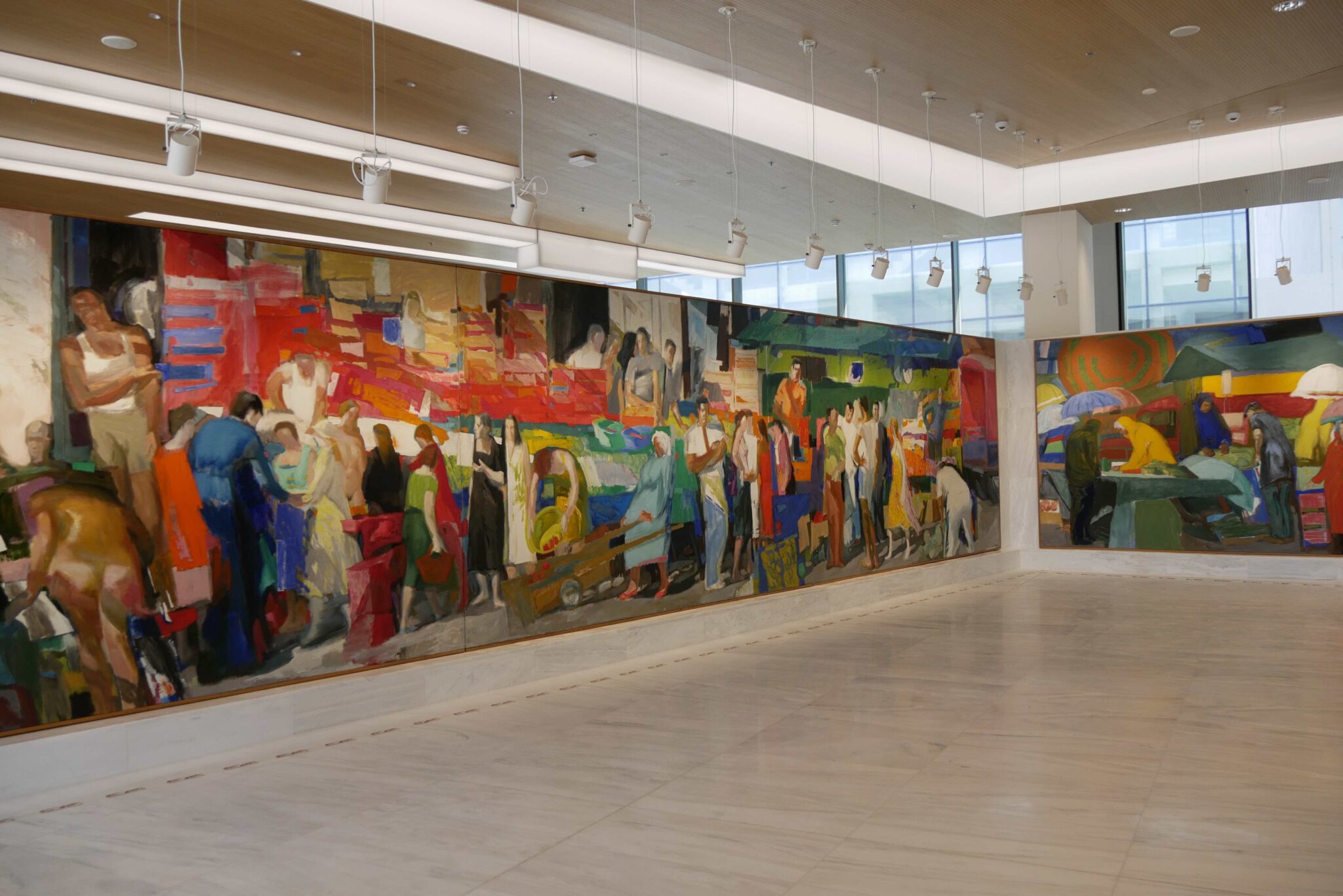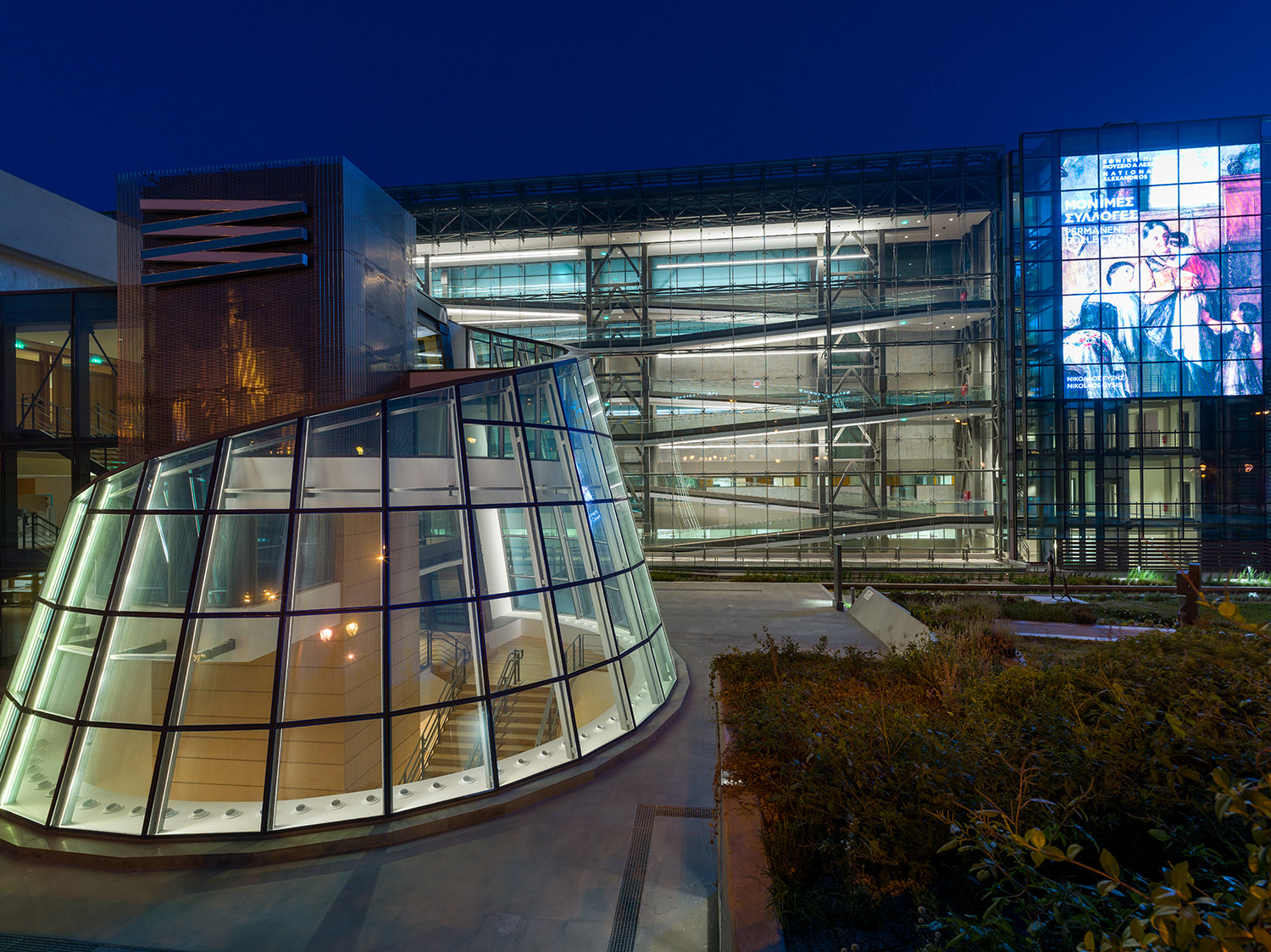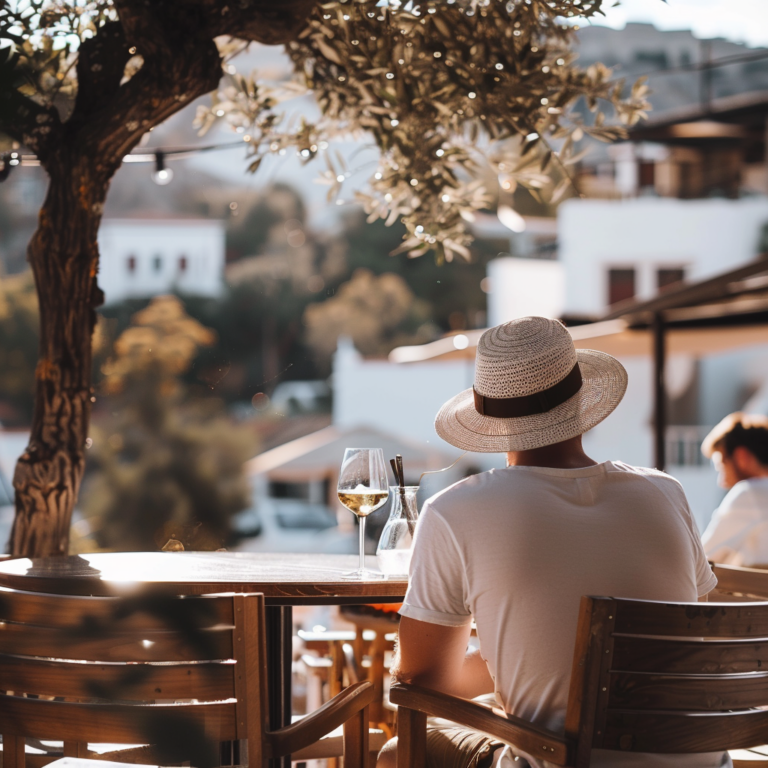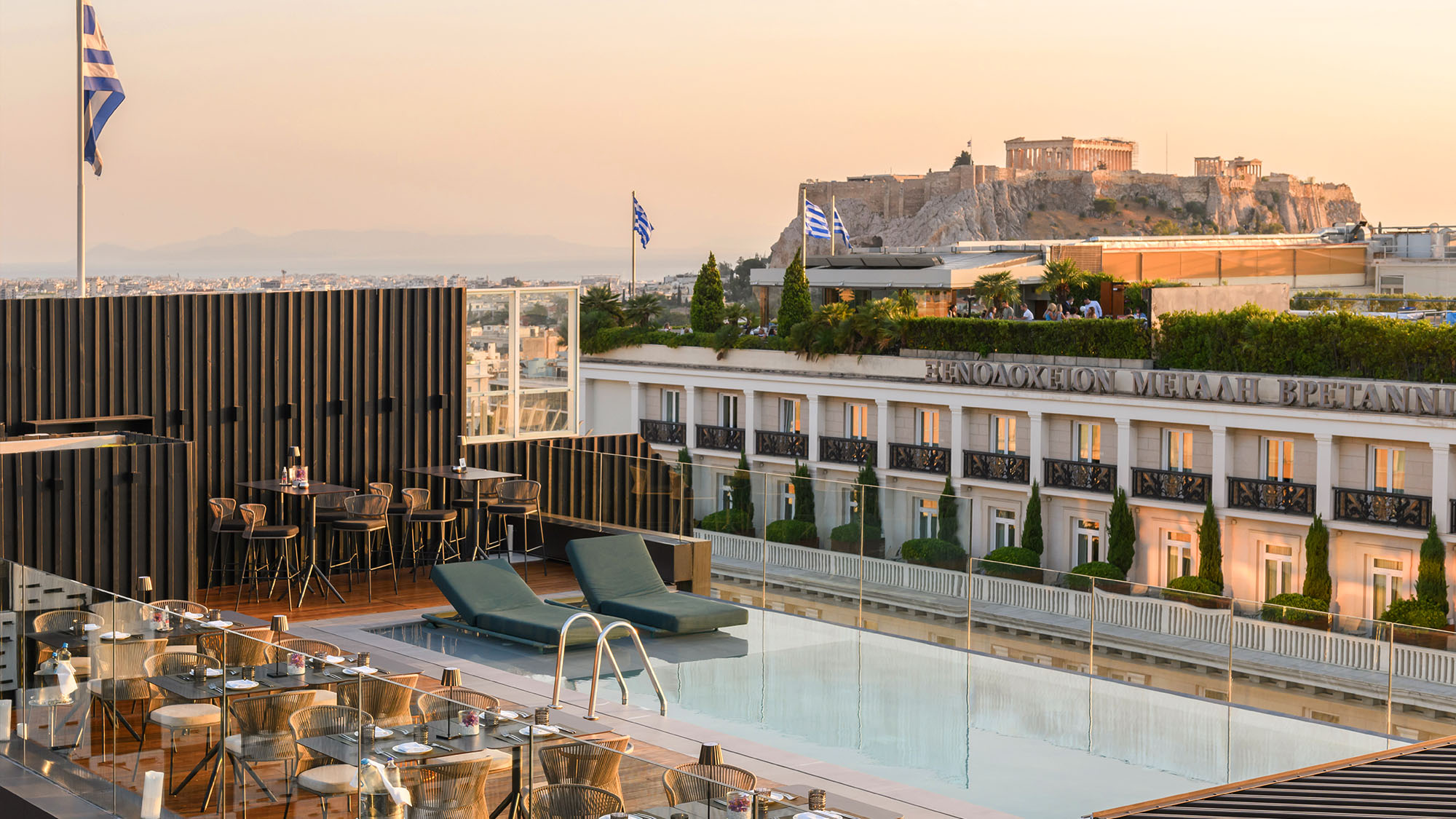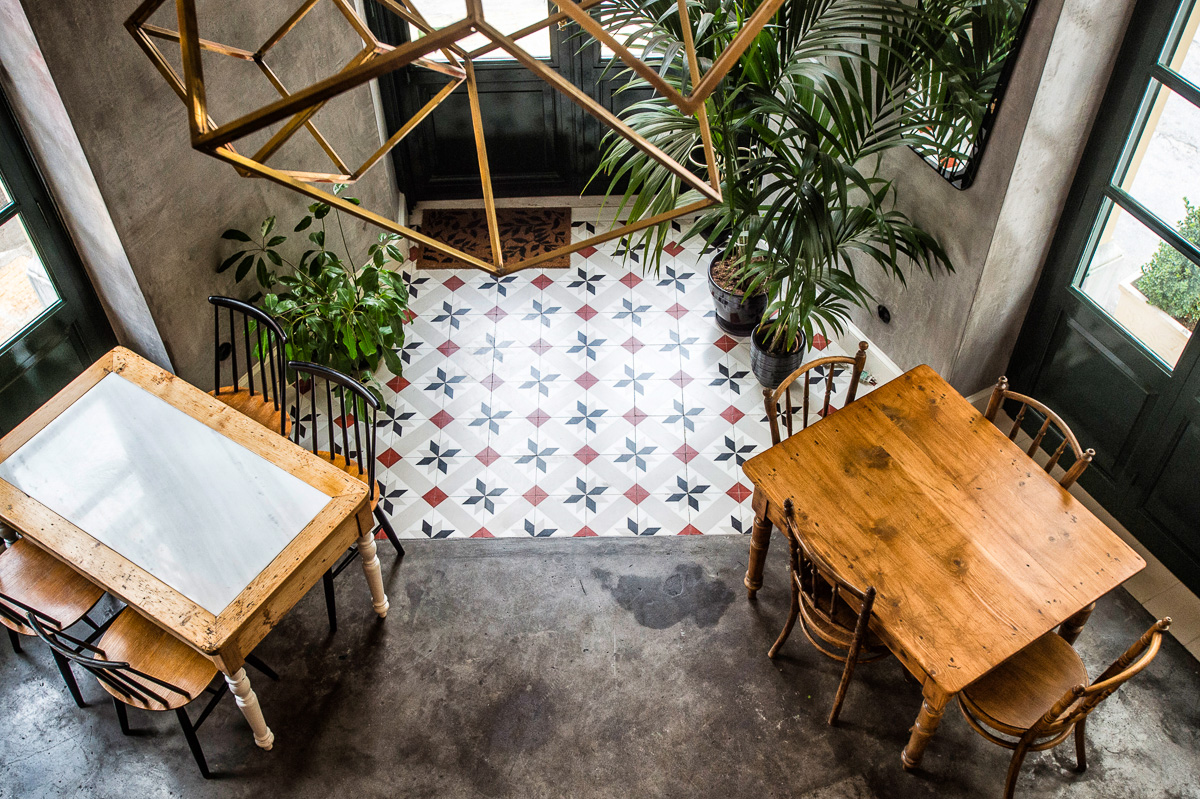Filled with precious art treasures, the National Gallery has, after a number of years, reopened its doors, welcoming the public to its renovated and expanded space in central Athens. The paintings on display at the new exhibition spaces, equipped with latest technology highlighting the work and raising the gallery’s standards to rival those of Europe’s leading museums, promise to rekindle memories of local visitors and astonish visitors from abroad.
The gallery’s collection includes paintings by Nikolaos Gyzis, El Greco, Georgios Iakovidis, Nikolaos and NikiforosLytras, Periklis Pantazis, as well previously unveiled work by artists from abroad. Entering the hallowed grounds of the fully renovated National Gallery provided us with the opportunity to see the new spaces, from close up, appreciate the priceless paintings, many of which are being presented for the first time, recall our everlasting love for the bright faces depicted by Gyzis, the innocence in the work of Iakovidis, glory inherent in Theodoros Vryzakis’ work, and also realise how art can assist in our understanding of the 1821 Greek Revolution anniversary from a different perspective.
To begin with, the National Gallery building, itself, surprises as it is now equipped with an additional building as an extension to the original facility, a cultural monument for Greece that has literally been revived. The original building had emerged as a classic example of modernism, designed by three visionary architects, Nikolaos K. Moutsopoulos, Pavlos Mylonas and Dimitris Fatouros, in the early 70s, when strict linear design and square-shaped concrete buildings arose in a revolutionary fashion throughout the city seeking greater architectural democracy. In its new form, the building has acquired a fresh outward-looking mentality, reintroducing itself with windows all over offering urban views from different angles, as well as stairs and huge window walls that adorn the central space, helping natural light to penetrate everything and everywhere.
The courtyard of the new National Gallery offers visitors a glorious welcome with its impressive pitch-black Rodin, an important sculpture from 1900, one of three authorised copies of the original in the world. It is one of Rodin’s most representative assemblages, as works combining ancient sculpture with modern additions were named. Next to it stands an ultra-modern work by Takis. It is as if the two artists are engaged in dialogue, presenting two different yet resoundingly groundbreaking ways in contemporary art.
The National Gallery’s interior is even more impressive as, by its entrance, “Street Market”, a large-scale painting by Panagiotis Tetsis depicting the commotion at an Athens street market, dominates, sending a message of openness and democracy sought by the museum for the people.
The museum’s initial modern character has been fully maintained, expressing a sense of openness required by any progressive museum. The task, however, was extremely challenging as the building’s original aura needed to be maintained without, however, preventing further modernisation. Challenges presented by the old building needed to be overcome. Its new lighting makes the biggest impression, especially for anybody who had experienced the lack of light inside the old building. The lighting has been combined with special sheets of film on the ceilings to highlight the paintings on display with precision. For the first time ever, museum visitors get to view, with full clarity, the faces of fighters in paintings depicting the glory of the Greek War of Independence and, in all their intensity, the colours, such as a burgundy-red dress worn by Clemence Serpieri, the protagonist in a gigantic and impressive painting by Nikiforos Lytras.
The new-look museum’s impressive architectural plan, designed by the architects Giorgos Parmenidis and Christine Longuepee and featuring rough lines, understated luxury and groundbreaking spirit, also plays a significant role in highlighting the paintings on display. The plan defines an enormous space which, besides main sections hosting permanent and temporary exhibitions, also covers three additional underground spaces – storage areas, workshops and administrative offices – designed to enable natural light to penetrate all the way to the bottom.
The director of the National Gallery, Mrs. Marina Lambraki-Plaka, informed that some of the temporary exhibitions are already being prepared. “A museum is not just an inward-looking entity that preserves works, but also a modern organisation that has direct contact with the public, maintains recreational, cultural and commercial roles, and needs to remain financially sustainable by offering additional spaces, such as conference halls and being involved in other ventures,” stressed Lambraki-Plaka, a professor emerita in art history.
This does not mean that the National Gallery is in danger of disrespecting its collection, Lambraki-Plaka pointed out, citing, for example, that it refused to commercially exploit a decision by Tetsis, expressed through his will, requesting the sale of his paintings so that funds could be raised for the purchase of work by new artists. The gallery refused to part ways with two significant paintings by Tetsis, despite the persistent interest of two collectors, the director informed.
1st floor: 19th century Greek art
Tetsis, a great painter and patriot, was, in the past, closely affiliated with the National Gallery in a variety of ways, including the admiration he felt for the works of his colleagues, each for a different reason. Testis, too, adored the “Portrait of Clemence Serpieri,” the majestic painting by Nikiforos Lytras that we now, finally, have the pleasure of seeing at the museum. Its gigantic dimensions had previously prevented this painting from being put on show – except for that one unforgettable exhibition, “Unknown Treasures from the National Gallery Collections,” during which it had made a huge impression.
This grand painting sets the mood for the first-floor area hosting a permanent collection, which, besides the renowned Serpieri portrait, is dominated by other emblematic paintings by Nikiforos Lytras, such as his superb “The Kiss”, offering a romantic touch alongside the artist’s dark and imposing “Antigone”, depicting the protagonist extending her hand over the dead body of her brother Polynices. The fashion in which the colours of the earth are distinguished in the painting’s overall darkness is genius. It is contrasted by the seemingly happier works of Iakovidis standing out at the opposite end of the room. They depict faces of all ages enjoying simple moments in life, harmoniously surrounding Iakovidis’ renowned “Children’s Concert”, his multi-award-winning painting from the turn of the 20th century that had impressed at the 1900 Paris Exposition.
Also dominant are the early landscapes of Greek painters inspired by the explorers. Depicting another side of Athens, they greet museum visitors at the first-floor entrance. Dominant at the back end of the same room, immediately following the genre-painting section, are significant works from the Symbolism art movement that flourished in the late-19th century and influenced Greek artists who had studied abroad such as Gyzis, a member of the Munich School, whose work here seems to renounce the figurative style of his early period. It includes his “Behold the Bridegroom Arriving”, a painting from the very beginning of the 20th century, which is accompanied by four equally impressive efforts of totally abstract technique. They are sided, in a prominent position, by his “Spring Symphony”. Slightly further on, distinctive work by Konstantinos Parthenis captures the attention, such as his captivating “Christ”. Directly opposite the abstract paintings, a lighter subject covered by Iakovos Ryzis’ “On the Terrace – Athenian Evening”, depicting a navy officer seated comfortably on his chair for a leisurely summer scene with an Acropolis backdrop as he recites verse to two ladies, makes an impression. This man is purported to be Prince Andrew of Greece, an ancestor of Prince Charles, to whom Mrs. Lambraki-Plaka, the National Gallery’s director, showed the painting during a private tour.
The battle of 1821 through art
Foreign artists portrayed the Greek Revolution in their own unique way, projecting, around the world, various events of the struggle, such as the Massacre of Chios. This theme was depicted by Eugene Delacroix, whose paintings of the period have defined the country’s collective consciousness. Delacroix’s “Massacre at Chios” is exhibited at the space on the other side of the first floor, along with many other iconic paintings concerning, and inspired by, the Greek Revolution. They constitute a special exhibition organised by the National Gallery to commemorate the 200th anniversary of Greece’s revival, as a modern state.
Vryzakis’ celebrated “Greece in Gratitude”, and two more paintings of his inextricably linked with the artistic depiction of the Greek Revolution, “The Exodus from Missolonghi” and the “Reception of Lord Byron at Missolonghi”, positioned opposite each other, as if engaged in dialogue, capture the viewer’s attention. The Missolonghi-themed paintings refer to the city where the Greek uprising broke out, a location revered by the Greek rebels and adored by Lord Byron.
Intermediate floor
No museum visitor should skip the intermediate floor, between the first and second floors, hosting rare engravings, many of which have been put on show for the first time as the gallery, previously, did not possess special display cabinets offering full protection for these works. Yiannis Kefallinos, a pioneering figure who had taken the initiative to establish the country’s first engraving workshop, dominates this section with exquisite work that was at the forefront of the Interwar period’s art scene. The artist’s horse-themed work, especially one piece depicting the carcass of a horse and its predators, representing the hardship and poverty that devastated both the artist and the people of his era, is deeply embedded in minds. Kefallinos, due to the appalling circumstances, was forced to leave for Paris where he ended up enjoying a successful international career as Jean Kefallinos before returning to the homeland as a distinguished figure to spearhead an entire art scene. It featured all the major names that made up Greece’s great engraving tradition, including Vaso Katraki, Kostas Grammatopoulos, Tassos, Tilemachos Kanthos and, naturally, Yiannis Moralis. Engraving clearly penetrated Moralis’ body of work, even his paintings. This artist’s work is to be found on the second floor, along with that of other exponents of Greek modernism.
2nd floor: Greek modernism
Heading up to the second floor feels like having taken a light-bound direction that promises to highlight the colour and optimism of the early work of Greek modernists. “The Straw Hat” by Nikolaos Lytras encapsulates the entirety of summer, outstanding and everlasting, captured by the artist’s shades of yellow, as well as the meek smile of the young man donning the straw hat. Continuing a dialogue with light, antiquity, minimalism, and whiteness prompted by Kefallinos through his iconic engravings recreating details of Athenian ampullae, the early Greek modernist work, dominating the National Gallery’s second floor, ideally brings together the ancient past and details of Greek history. “Announciation” by Parthenis is a good example, the artist daring to lower the horsemen from the frieze of the Parthenon, while concurrently putting an ancient lyre in the hands of his own exquisite angel instead of a lily.Just as imposing is Parthenis’ “The Apotheosis of Athanasios Diakos”, which engages in a similar type of dialogue through the use of various aspects of Greek history and art. Greek revolutionary hero Athanasios Diakos, who died a martyr’s death, depicted wearing a classical chiton, ascends to heaven and is received by angel musicians, similar to those in El Greco’s paintings, while a girl, as if out of Botticelli’s “Spring”, sprinkles the hero with flowers. One crucial detail needs to be stressed. Parthenis initially drew all these details on the back side of the canvas for full precision in the painting.
However, the bright images of a reborn antiquity head in the direction of a dark, Byzantine-influenced world as a result of the Asia Minor catastrophe’s saddening impact on art. An impressive and enormous wall painting by Fotis Kontoglou, lifted from a wall at his home, reminds of a Byzantine altar. In this work, this great artist assembles a cast of beloved painters, philosophers and writers, as well as paradoxical heroes that appear to have escaped from imaginary tales. In uniting the imaginary with the sacred, as well as inner and external matters, Kontoglou dynamically gave the Byzantine world a place in Greek modernism, destigmatising the era, thereby showing the way for his successors. The cosmopolitan Generation of the ‘30s acquainted themselves with classical, timeless forms, transforming them into motives for constructive experimentation with new ideas, fusion and paradoxical creations. We should ask ourselves how would we nowadays perceive the gorgeous paintings of Theophilos (Chatzimichael) if the poet George Seferis’ writings did not exist. The good thing is that these artists, even though theorists and inspired individuals, never let go, no matter how bad the conditions. This is seen in the way Moralis engages in mental exchange with Yiannis Tsarouchis, when the former persists in depicting attractive females and eternal youth and the latter dynamic males. This, too, is an element of sensuality that pervades all these works. Ideas are absent and the human form is, once again, the main subject. A portrait of Maria Roussen Baddeley – Moralis’ first wife, between 1941 and 1945, whom the gallery section was named after, and mother of Dorothy Latsi, who donated funds for this part of the gallery – depicted with Moralis, is impressive. So, too, is a series of paintings by Nikos Hatzikyriakos-Ghika, from different periods. One’s attention is inevitably captured by his renowned “The Studio”, whose style reflects the artist’s dialogue with Pablo Picasso.
3rd floor: Permanent collections, modern conceptual art
On the third floor, gallery visitors may see the evolvement of modern Greek art, through paintings and installations on display. Pavlos’ “Environment” and “Curtains”, on plexiglass, using his well-known affiches massicotees technique, will impress. Visitors may also enjoy work by Costas Tsoclis and Yannis Gaitis, Greece’s foremost exponent of pop art. It is difficult to leave the National Gallery and empty your mind of the impressive incarnate nudes by Giorgos Rorris, expressing an emptiness of the human soul.
The National Gallery offers many reasons for return visits, including its view of the city, from different angles.
Art has, once again, managed to emerge as the source of good news as the Greek capital, or, rather, country as a whole, has regained the National Gallery, representing nothing less than the heart of the country’s world of art.



